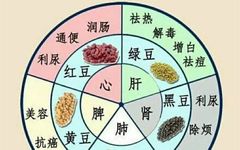In Traditional Chinese Medicine (TCM), the concept of the five organs refers primarily to the heart, liver, spleen, lungs, and kidneys. The health of these organs is essential for vitality and spirit.
Many people often say “the five colors nourish the five organs”; what does this actually mean?
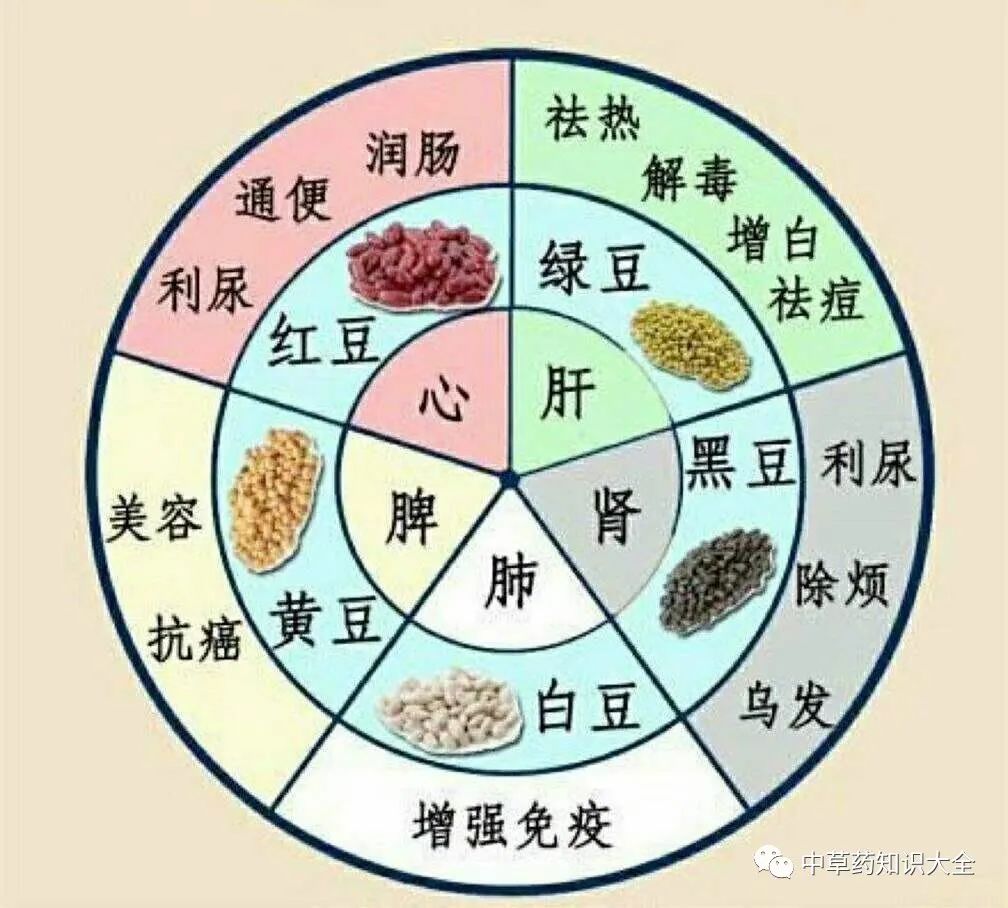
I suspect many share my curiosity. Today, I will explain in detail:
The theory of the five colors nourishing the five organs suggests that regularly consuming foods of five different colors can nourish the corresponding organs.
Specifically:
Green nourishes the liver, red nourishes the heart, yellow benefits the spleen, white moistens the lungs, and black nourishes the kidneys.
For example, white foods like radishes and silver fungus can moisten the lungs; black foods like black beans and black fungus can nourish the kidneys.
The theory of “the five colors nourishing the five organs” originates from the TCM classic text, the Huangdi Neijing (Yellow Emperor’s Inner Canon).
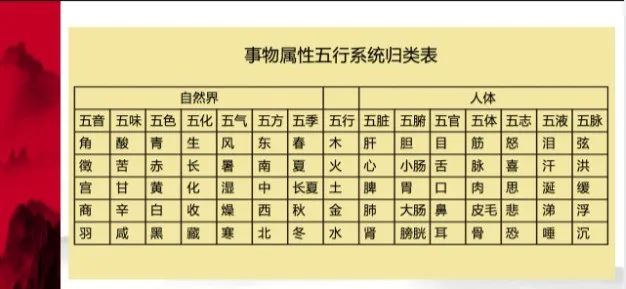
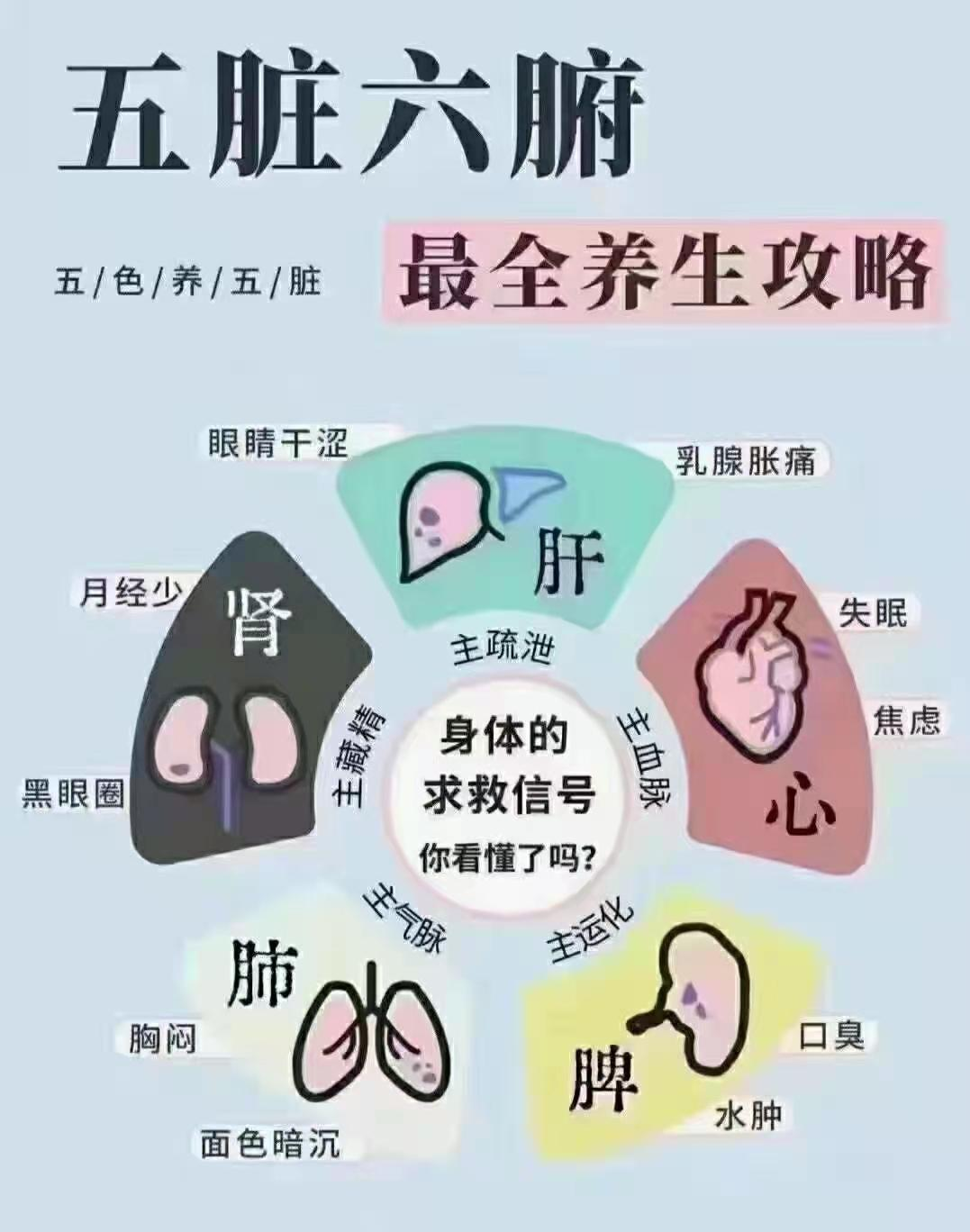
Ancient scholars believed that all phenomena in nature could be related to the five elements: wood, fire, earth, metal, and water.
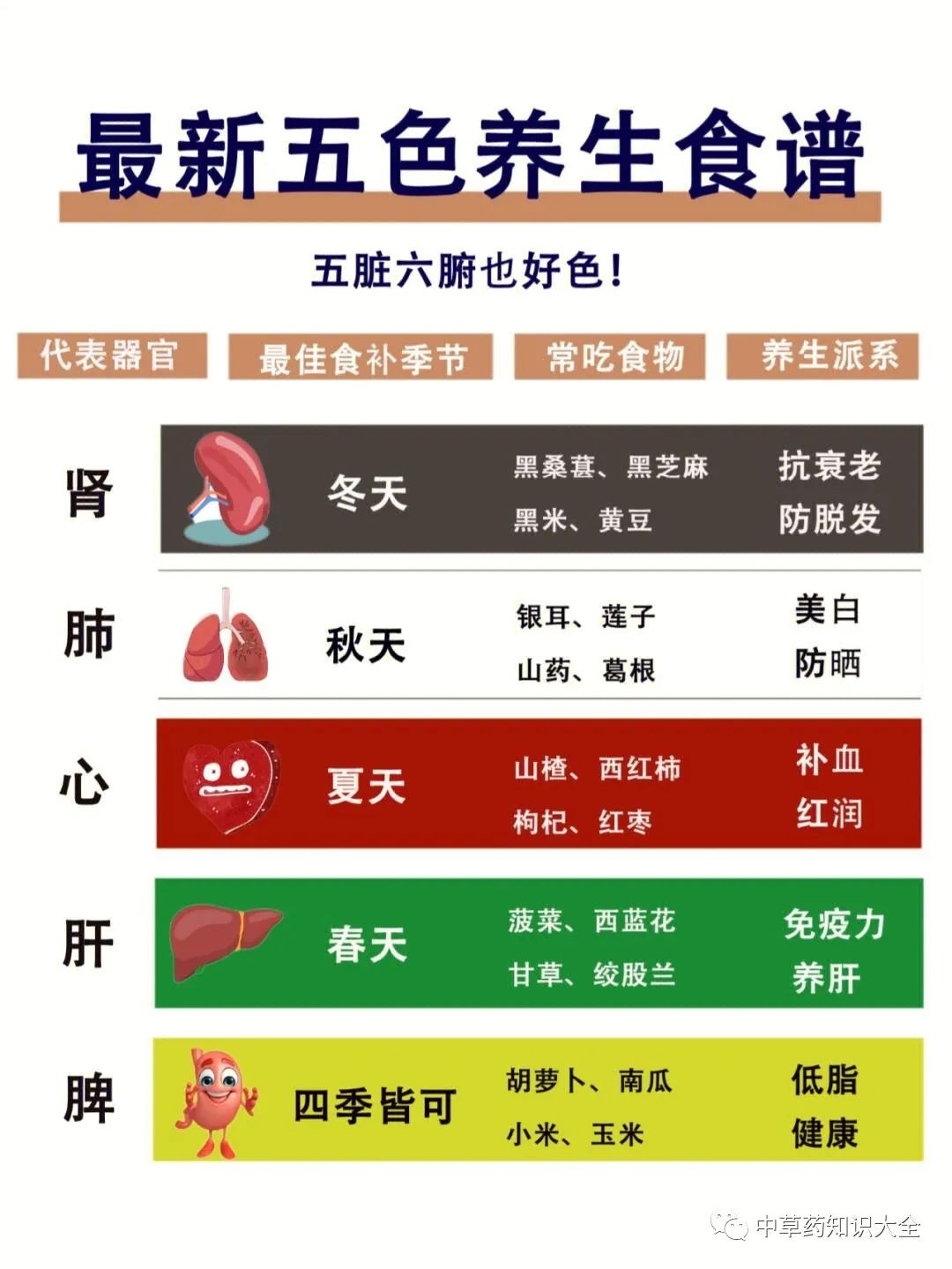
Thus, we have:
Sour flavor and green correspond to the liver; bitter flavor and red correspond to the heart; sweet flavor and yellow correspond to the spleen; spicy flavor and white correspond to the lungs; salty flavor and black correspond to the kidneys.
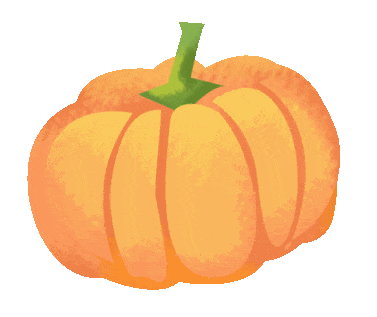 Supporting Liver Health
Supporting Liver Health
“The liver stores blood and is the sea of blood.” The liver governs the smooth flow of qi and blood, ensuring that these vital substances are properly distributed to other organs for their normal function.
Therefore, when liver blood is deficient, it can easily lead to symptoms such as dizziness, fatigue, insomnia, or dry eyes and tearing in the wind, indicating reduced blood circulation in the liver, which can impair its ability to absorb nutrients, metabolize, or detoxify… This not only affects liver health but can also lead to disease.
TCM posits that “green” corresponds to the liver, which belongs to the wood element in the five elements.
Green (青, qing) benefits liver qi circulation and metabolism, helps alleviate fatigue, soothes liver stagnation, prevents liver disease, enhances vision, protects the optic nerve, and boosts immune function.
Foods such as mung beans, cucumbers, broccoli, edamame, celery, spinach, bamboo shoots, guava, asparagus, leeks, green peppers, napa cabbage, kiwi, and kelp are beneficial for liver and gallbladder health.

For liver health, there is no one-size-fits-all method; each person’s “liver-nourishing strategy” should be tailored under a doctor’s guidance to find the most suitable approach.
TCM suggests that individuals who are often gloomy have stagnant liver qi, typically associated with a deficiency of liver blood, while those who are quick-tempered may have excessive liver yang, indicating a condition of liver yang hyperactivity.
People with liver blood deficiency can use rose, hawthorn flower, or he huan flower to brew tea, which can help soothe the liver and relieve stagnation. Additionally, consuming jujubes or longan can nourish liver blood.
Those with excessive liver yang should avoid overly spicy foods and need to clear liver heat, which can be achieved by drinking chrysanthemum tea, consuming mint, or using cassia seeds to relieve constipation, and can regularly drink kudzu root tea.
However, not everyone with liver blood deficiency or excessive liver yang can use the above methods; treatment should be personalized based on individual constitution, as herbal prescriptions can vary widely.
 Supporting Heart Health
Supporting Heart Health
Red corresponds to the fire element in the five elements and nourishes the heart, enhancing the heart’s qi, increasing cellular activity in the body.
Have you ever experienced palpitations, shortness of breath, sweating, irritability, or easily getting overheated? These issues may be related to our “heart qi deficiency”.
Heart qi deficiency refers to insufficient function of the heart’s qi, leading to weakened heart contractions.
This can result in palpitations, shortness of breath, and dizziness. Sometimes, even slight activity can cause rapid heartbeat or breathlessness.

TCM emphasizes the consumption of red foods, which are beneficial for heart health. Red entering the heart has blood-replenishing, blood-generating, and yang-replenishing effects, making it suitable for both “deficiency syndromes” and “excess syndromes”, such as weakness, pale complexion, anemia, palpitations, cold extremities, and weakness in the limbs.
When it comes to nourishing the heart, food is essential, but preparing various ingredients can be cumbersome and time-consuming. If you prefer simplicity, brewing a sweet wheat tea can yield good heart-nourishing effects.
Of course, heart-nourishing and calming the spirit also involve soaking your feet in hot water before bed. If you often experience fatigue in your limbs, drowsiness, or loss of appetite, you can add a herbal foot bath pack to the hot water, stimulating the foot yangming stomach channel and foot taiyang bladder channel, which helps strengthen the spleen, eliminate dampness, promote circulation, and improve sleep quality.
 Supporting Lung Health
Supporting Lung Health
The Huangdi Neijing, Suwen chapter states: “The white color corresponds to the lungs, opening at the nose, with a spicy flavor, and diseases affecting the skin…” This means that consuming more white foods has lung-nourishing effects.
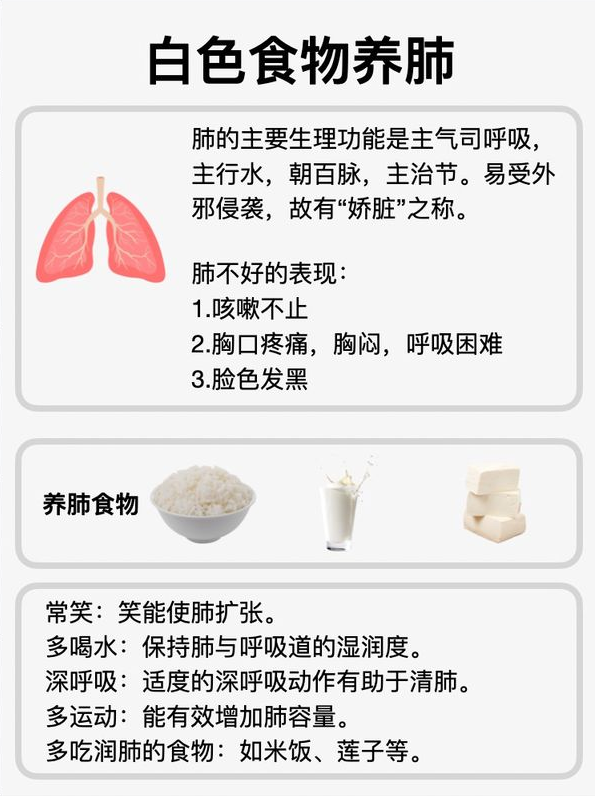
The lungs are delicate organs that prefer moisture and dislike dryness. To nourish and protect the lungs, it is essential to consume foods that have a nourishing and moistening effect.
Regarding lung health, the Bencao Gangmu mentions: “Sheep milk is sweet, warm, non-toxic, moistening to the heart and lungs, and replenishing lung and kidney qi.” TCM has always regarded sheep milk as particularly beneficial for the lungs and trachea.
In the dry autumn and winter seasons, the lungs, respiratory tract, and nasal passages are prone to discomfort. Regularly drinking sheep milk not only nourishes yin and moistens the lungs but also helps prevent and alleviate respiratory infections and rhinitis that are common in autumn. To nourish yin and moisten the lungs, consider having a cup of probiotic goat milk powder in the morning and evening.
Many people feel their lung function has declined, especially among the elderly.
Through TCM dietary therapy, one can nourish the lungs; daily dietary adjustments can enhance the effects, such as yam and coix porridge, lily, mulberry leaves, tangerine peel, and dried snow pears. Friends troubled by throat and lung diseases can brew mulberry chrysanthemum pear tea.
In addition to dietary therapy, engaging in aerobic exercise, such as swimming, jogging, walking, cycling, or yoga, can enhance lung capacity, help the body detoxify naturally, and strengthen the body. Deep breathing exercises can also help expel residual waste gases from the lungs and improve lung function.
 Supporting Spleen and Stomach Health
Supporting Spleen and Stomach Health
Yellow foods correspond to the earth element, entering the spleen, and can enhance spleen qi, promoting and regulating metabolism.
Thus, yellow foods, such as sweet potatoes and yellow beans, can protect spleen and stomach health, maintaining the spleen’s functions of transformation, elevation of clear qi, and blood regulation.
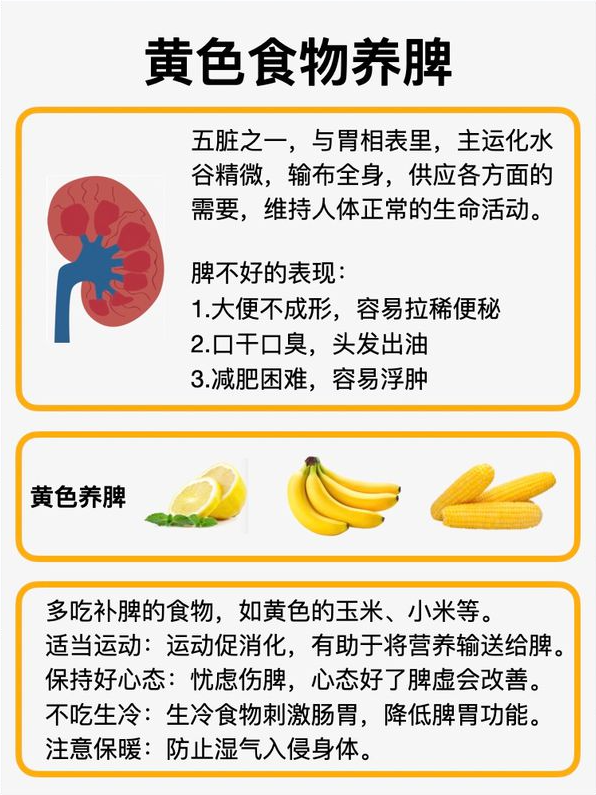
TCM states: The spleen and stomach are the foundation of postnatal life and the source of qi and blood generation. Therefore, to maintain health, one must first nourish the spleen and stomach.
“Spleen deficiency leads to half the body being wasted”; TCM believes that dietary therapy plays a crucial role in restoring spleen and stomach function. It is recommended to consume foods that strengthen the spleen and eliminate dampness, such as yam, poria, and fox nuts.
The Ming Dynasty’s dietary therapy text, the Lufu Jinfang, records that pastries made from poria, yam, fox nuts, and lotus seeds have the effects of strengthening the spleen, replenishing deficiency, and eliminating dampness. The cake is light and elegant, named “Yangchun Bai Xue Cake”.
Yangchun signifies the awakening of all things in spring, while Bai Xue represents purity and cleanliness, evoking the sound of snow and bamboo.
The ancients named this poetic pastry after the gentle spring breeze and pure white snow, making it a daily delicacy that not only eliminates dampness and swelling but also nourishes the spleen and stomach.
A healthy spleen and stomach can prevent numerous diseases! Those with poor spleen and stomach health often have a dull yellow complexion and frequently experience loss of appetite, bloating, and diarrhea. They can consider using hawthorn and poria as herbal remedies, or brew ginseng and poria lotus leaf tea.
When discussing spleen and stomach issues, one cannot overlook the concept of spleen deficiency and cold. As the saying goes, “nine out of ten stomach ailments are due to cold.” If you have symptoms of cold stomach pain, be sure to keep warm and avoid cold foods. For those with spleen deficiency and diarrhea, consider applying moxibustion to the navel and avoid raw and cold fruits. If you feel cold in the stomach area, regularly consume ginseng and poria lotus leaf tea or ginger tea.
Finally, don’t forget to maintain regular exercise, such as walking, jogging, or practicing Tai Chi.
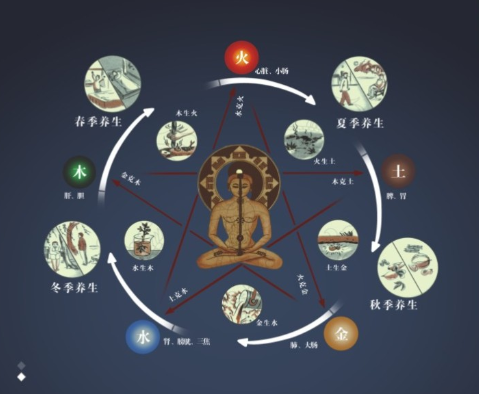
 Supporting Kidney Health
Supporting Kidney Health
The kidneys are the foundation of congenital essence and the root of life. They are essential for maintaining normal water metabolism, generating qi and blood, respiratory function, and hematopoiesis..
Symptoms such as lower back pain, night sweats, dizziness, and tinnitus may indicate “kidney deficiency”.
Given the kidneys’ importance, how can we nourish them in daily life?
Black foods correspond to the water element, entering the kidneys, enhancing kidney qi, and providing beauty benefits and anti-aging effects.
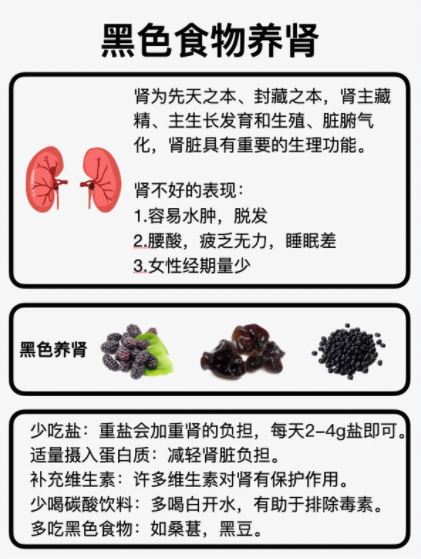
However, why is Huang Jing (Polygonatum) so highly praised for kidney nourishment?
In many herbal formulas, Huang Jing is used as a remedy for physical exhaustion, fatigue, and loss of appetite. For symptoms like dizziness, weakness in the lower back and knees, consider adding some nine-steamed and nine-sunned Huang Jing to your tea.
The Ming Dynasty’s Chen Jiamo in the Bencao Mengquan states: “Clean, nine-steamed and nine-sunned, can replace grain, and is used for treating diseases…”
The Rihua Zujia Bencao states: “Huang Jing alone, when steamed and sun-dried for a long time, can enhance beauty and suppress hunger.”
Thus, consuming nine-steamed and nine-sunned Huang Jing is indeed a divine method for nourishing the kidneys.
Why must Huang Jing be nine-steamed and nine-sunned to maximize its therapeutic value?
We know that regardless of how good a food, medicine, or supplement is, effective digestion and absorption are crucial for its benefits.Only with effective digestion and absorption can it exert its effects.
Ancient TCM describes the properties and flavors of herbs, believing that after nine-steaming and nine-sunning, the herb’s properties become purer, eliminating unwanted flavors.
The kidneys are the “foundation of congenital essence”; a healthy kidney is cultivated through proper care, and knowing how to nourish the kidneys is essential for health.
Symptoms like exhaustion, fatigue, loss of appetite, dizziness, lower back pain, and premature graying of hair indicate the need for kidney nourishment. In daily life, consider consuming black beans, mulberries, black sesame, poria, goji berries, and yam, and perhaps cook a bowl of mulberry and coix porridge.
The history of Chinese people consuming porridge dates back over 2000 years. Professor Yang Li from the Graduate School of the Chinese Academy of Traditional Chinese Medicine states that ancient texts have documented this practice, with the Zhou Book mentioning that since the time of the Yellow Emperor, people began “cooking grains into porridge” for health benefits.
Bian Que stated: “To quickly cure diseases, one must rely on medicine; to maintain health, one must rely on food.”
This means that to quickly treat diseases, medication is necessary, while maintaining health requires achieving wellness through daily food, which is what we call dietary therapy.For daily dietary therapy, consider using mulberries, Huang Jing, longan, or brew tea with poria and mulberries.
Of course, adequate sleep plays a vital role in the generation of qi and blood and the maintenance of kidney essence. Clinical studies have found that many patients with kidney failure have a history of excessive late nights, fatigue, and insufficient sleep.
Therefore, avoid staying up late, develop good sleep habits, and maintain a regular schedule to benefit kidney essence.
 ENDNote:This account aims to promote TCM culture, and the TCM knowledge mentioned in the text is for educational exchange only.
ENDNote:This account aims to promote TCM culture, and the TCM knowledge mentioned in the text is for educational exchange only.
WeChat has been updated! If youneither star me★nor like or “view” my articles, the system will assume you do not wish to receive updates on herbal knowledge, and ultimatelyyou will not receive our article updates
Thank you for your patience in reading. If you find it helpful, please click “ Like” and “
Like” and “ View”~
View”~
As the ancient saying goes, “In a group of three, there must be a teacher among us.” To facilitate the integration and exchange of knowledge among TCM practitioners, we are preparing to establish a discussion group on herbal knowledge. If you wish to join, please add the editor on WeChat and specify your identity. The editor invites you to join the group.


